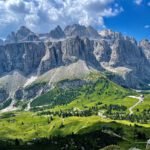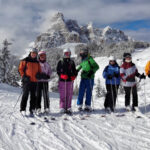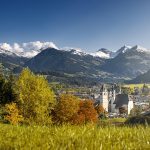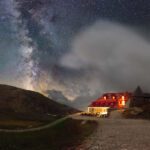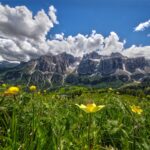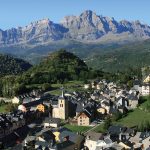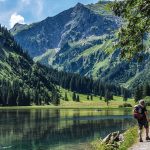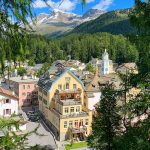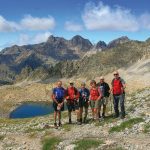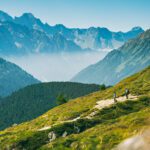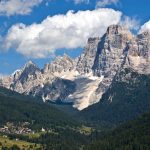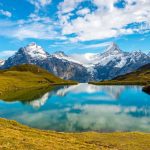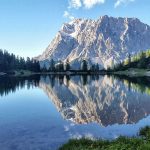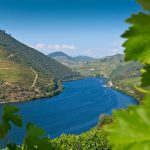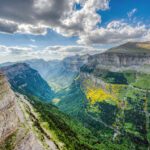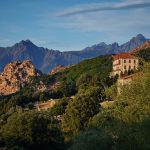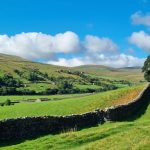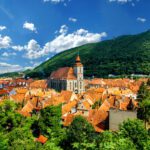Each autumn our centre-based walking holidays in Tuscany put intermediate hikers right at the heart of the heavenly Val d’Orcia, home to the best walking in the region. This holiday combines memorable days in glorious landscapes, with the warm hospitality and authentic Tuscan character of Agriturismo Il Rigo. This charming 'working farm' hotel has been in the same family for generations, recently producing an award-winning focus on fabulous local cuisine in an area world-renowned for its wines.
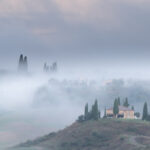
Collett's Guests, Anne & Pete

We caught up with Anne Pugh, who recently went on our centre-based walking holiday to Tuscany with partner Pete, to get their take on the experience. Anne has been coming on walking holidays with Collett’s for a number of years, having experienced the Dolomites (twice), the Austrian Alps and the Picos de Europa.
Living in south Manchester, Anne and Pete are both avid runners and walkers, who value their proximity to the Peak District National Park, home to an abundance of stunning and diverse walks. In addition to walking and running, Anne loves to spend time in the garden, and is part of a number of community gardening projects, while Pete is a keen photographer.
Collett’s: “So, how did you find your walking holiday in Tuscany with us?”
Anne: “The quality of the landscape, the walking, meeting and walking with other group members was really fantastic. Everything about the holiday was pleasant and easy. Not having to devise walks in an unfamiliar area is always great, and we have come to trust that Collett’s will always select the best walks in each location for us to enjoy. Being very well looked after at every level is also part of the experience.”
Collett’s: “Sounds like you had a great time. How did you find the walks on this holiday?”
Anne: “All of the walks were excellent, despite the constraints of Pete’s knee issue. Having been with Collett’s before, we know that Collett’s will provide excellent information to support the walks, allowing us to easily navigate our way through them.”
Unforgettable walking experiences, chosen by us.
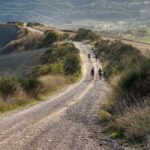
Our Walks Team diligently tread the trails of each of our locations, and then they only select the ones that will ensure you get the very best walking experience. Additionally, all our centre-based walking holidays come with a detailed Walks Pack, consisting of comprehensive route notes, maps, a handbook for the location, as well as access to our smartphone app for user-friendly navigation.
Another stand-out feature of our centre-based walking holidays is the presence of our dedicated Walks Teams. Whether you need help selecting the right walk for your comfort zone, or you seek a recommendation for a self-imposed rest day, the local knowledge of our Walks Team is on hand daily to guarantee you a succession of unforgettable days in the many inspirational places that punctuate the Val d’Orcia.
Find Out More
Collett’s: “And what were your thoughts on the hotel and the food?”
Anne: “The Agriturismo Il Rigo hotel was very good indeed. The meals and hospitality were exceptional, for vegetarians, vegans and omnivores alike. We were aware that the food in the hotel was supposed to be particularly good before we arrived, and we were not disappointed.”
Collett’s: “How did you find the Collett’s staff?”
Anne: “Ayelen, one of the Collett’s Walks Team members, was thoughtful, knowledgeable and incredibly supportive, nothing being too much trouble for her. We went to Collett’s Office Hours each evening, which we think are a must, to talk about the walks we are going to undertake the next day. It’s also great to meet up with the other guests too to chat about the walks they’ve done and share stories. Socialising and making friends worked very well for us.”
Collett’s: “Have you got any plans to take more walking holidays in the future?”
Anne: “Yes, but no specific plans as yet. I really like the look of the Transylvania walking holiday!”
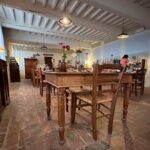
Authentic accommodation with warm hospitality

Collett’s strives to provide walking holidays of the highest quality. That’s why we visit several hotels when we research a region, selecting only those that offer the most authentic hospitality and cuisine. Good food, homely relaxation and a prime location for access to trailheads, are all hallmarks of our hotels.
The stylishly natural Agriturismo Il Rigo is no exception. Owned and run by our friends Matthias and Luisa, it has been in the family for generations. The en suite bedrooms are simple yet elegant with embroidered bed linen and antique furniture. The views stretching out over the terraces and gardens will absorb you for hours. Luisa has won awards for her pasta and adores using fresh herbs, vegetables and fruit from the garden in her exquisite recipes. The warm and welcoming hospitality of the hotel team, for which nothing is too much trouble, will be a fondly remembered part of your stay. In short, this is a Collett’s holiday with all the ingredients for the perfect autumn walking holiday in Italy’s much-loved Tuscany.
Find Out More